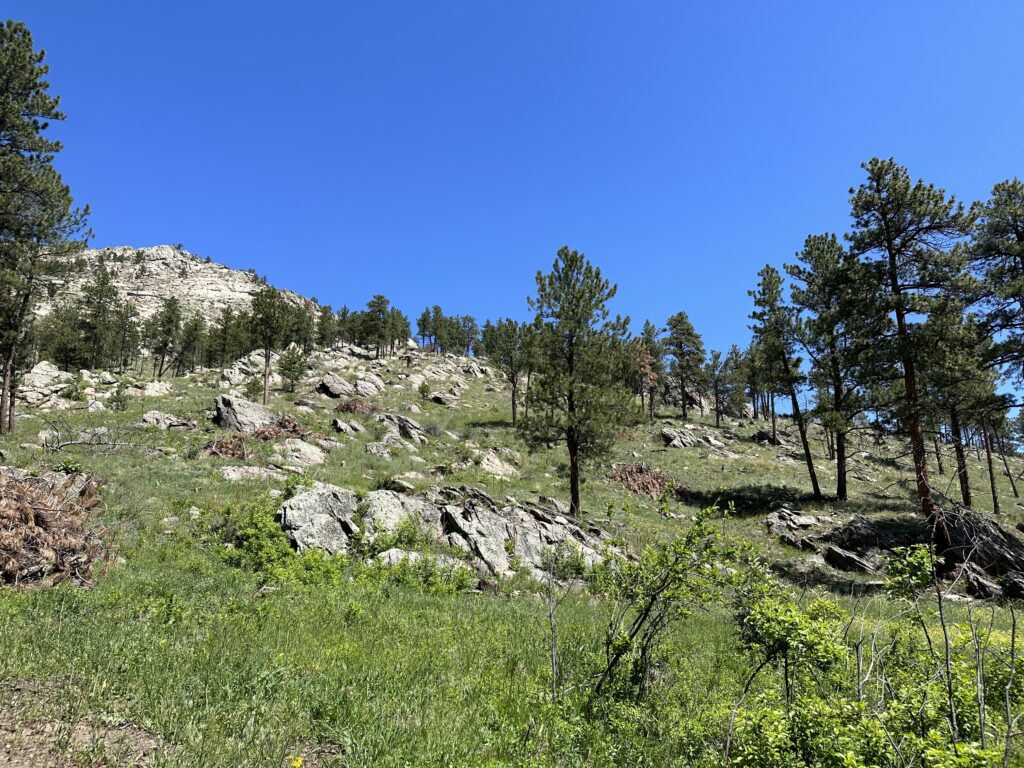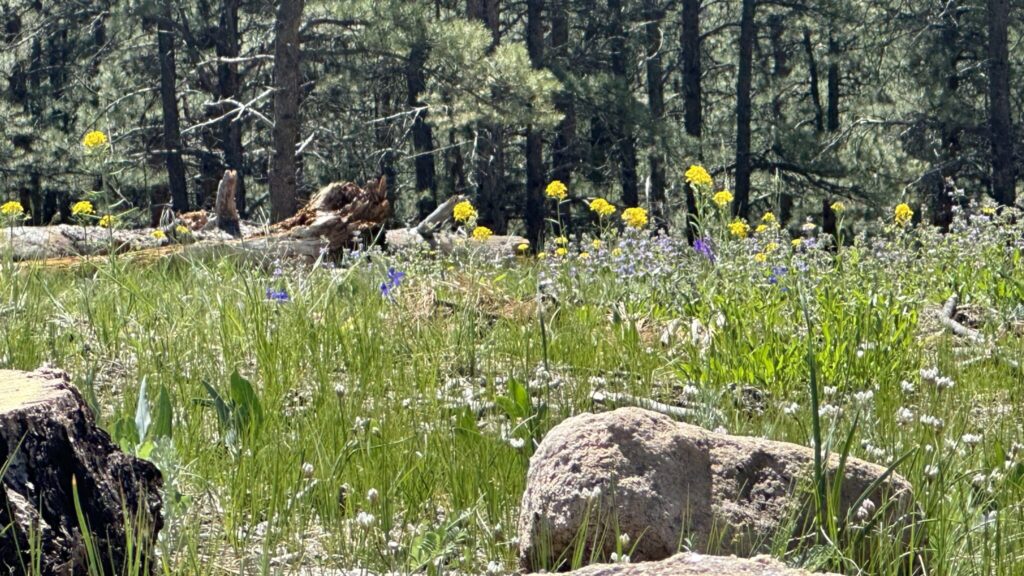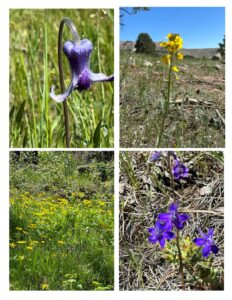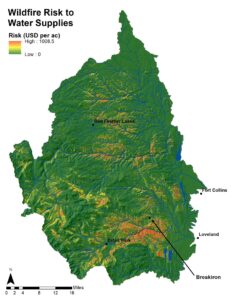Peaks to People team members recently had the pleasure of visiting a newly completed forest health project with our partners from the Larimer Conservation District. This project involved a forest restoration treatment of 32 acres that border the Arapaho-Roosevelt National Forest in the Storm Mountain Area. While a portion of the project area was affected by the 2020 Cameron Peak Fire, the unburned unit contained dense stands of Ponderosa Pine trees, with low diversity of shrubs, grasses, and wildflowers on the forest floor. The overarching goal of this project was to restore forest functionality, improve species composition, and reduce tree density, thus reducing the severity of any future wildfires that may pass through.
A Light Touch and A Quick Recovery
We were truly impressed with how quickly the site has recovered from the tree removal process. Our hike through the area revealed an abundance of wildflowers and wildlife, which were thriving in the now open canopy and diverse understory. The overly moist spring that Northern Colorado has experienced this year certainly helped the site rebound, but we also commend the local contractor who did a tremendous job with nothing more than a couple of chainsaws and a mini excavator. The contractor and his two sons cut the selected trees and 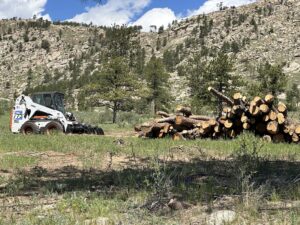 preserved specified clumps of trees and snags needed by wildlife. They piled the slash to be burned at a later date and hauled the timber off-site using a gooseneck trailer. This was no small task, considering that the road into this community is steep and narrow, with numerous tight curves.
preserved specified clumps of trees and snags needed by wildlife. They piled the slash to be burned at a later date and hauled the timber off-site using a gooseneck trailer. This was no small task, considering that the road into this community is steep and narrow, with numerous tight curves.
Protecting Critical Water Supplies
To support Peaks to People’s funding decisions, we utilized the Watershed Investment Tool (WIT) to compare the water supply risk mitigation benefits of this project to other planned forest management projects across agencies in the region. The project area ranked as having a moderate risk to water supplies due to its proximity to multiple downstream water sources, moderate forest density, and low to moderate slope steepness. The project area drains to the Big Thompson River via Cedar Creek. Just 1.5 river miles downstream from where Cedar Creek flows into the Big Thompson, we find the Dille Tunnel, which is a vital part of the Colorado-Big Thompson (C-BT) system and is important for Northern Water, the Western Area Power Administration, and the City of Loveland. The City of Loveland’s drinking water pipeline is approximately 2.5 river miles downstream of the Dille Tunnel. Further downstream, we have the Loveland-Greeley Canal and Barnes Ditch, both of which are integral to the City of Greeley’s water system.
A Valuable Partnership
Restoring forest health, reducing wildfire severity, and protecting water supplies are our purpose and mission. We are grateful to the Larimer Conservation District for allowing us to partner with them on this successful project, and we look forward to continuing our valuable collaboration with them.